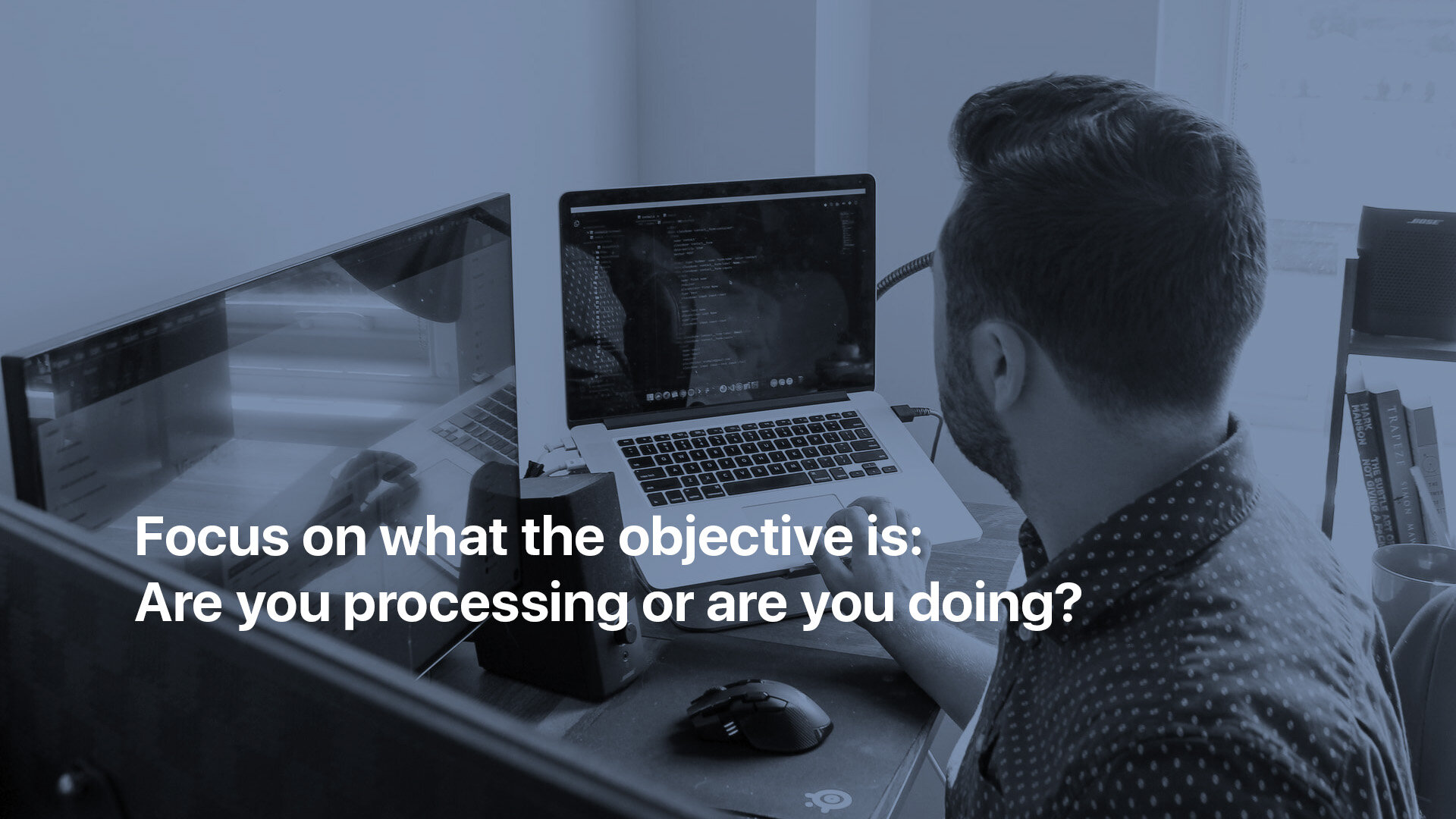Never confuse processing with doing.
An issue I regularly see is trying process and do your inbox simultaneously. The two are quite different and need to be separated or you are going to find yourself dragged down rabbit holes you never intended to go.
Many years ago, David Allen, author of the Getting Things Done book, suggested that if a task would take less than two minutes then you should do in now and not get it into your system. The reasoning behind this is as getting the task or item into your system is going to take you around two minutes then you may as well do the task now and just get it out of the way.
It’s a great concept and yet it has caused so much frustration and delay.
Why?
Well, let’s say you have twenty items in your inbox at the end of the day. You’re tired and you just want to finish work and get home. If just five of the tasks you collected are two-minute tasks, you now add ten minutes to your processing time. Instead of it taking five to ten minutes to get these tasks into their rightful place, you now need to give yourself fifteen to twenty minutes to get closed up and finished.
Now, the time is not really that important, what is important is the objective, which is to get your inbox clear not be distracted from the task in hand. More often than not, a task you originally thought would take two-minutes or less will take longer than two minutes.
Most people resist processing their inboxes. This is why we end up with thousands of emails in our inboxes and hundreds of tasks in our task list manager’s inbox. Once our inboxes get to this stage we resist going in there and that compounds the problem.
What we need to do is to make processing as quick and as simple as possible:
What is it?
Do I need to do anything with it?
When will I do it?
The only three questions you need ask yourself when you process. If you add a fourth question to the mix “can it be done in two minutes or less?” You have added complexity. At the end of the day your brain is frazzled and you are not going to be making your best decisions. Simplifying the process as much as you can reduces the need for additional brain power and that way you get everything into your system quickly.
A further benefit of separating out processing from doing is you compartmentalise and so remain more focused. Compartmentalising means you go into processing mode which ultimately speeds everything up.
Because of the time difference between Korea and Europe and the US, I begin the day with around one hundred emails in my inbox. If I were to try and process and clear that inbox using the 2-minute rule, I would be spending around an hour every morning just on email. By not applying the 2-minute rule, I can process those hundred emails in around fifteen minutes. All I am doing is deciding what something is, whether I need to do anything with it and if so dropping it into my Action This Day folder. Once that is done, I can move on to something more important — there’s always something more important than dealing with email isn’t there?
Once you’ve done that processing, you can, if you wish, shift into doing mode and go to your Action This Day folder and deal with it. You know any mail in that folder requires some action from you.
QUICK TIP: Reverse the order of your mail in your Action This Day folder. That way the oldest mail is at the top so you know you have to deal with that one first.
It’s really all about your objectives. What’s the objective here? When it comes to clearing your inboxes the objective is to zero out your inbox, not deal with anything that will take less than two minutes. That’s a different objective.
This is one of my favourite questions. What’s my objective? Whenever I find myself distracted or a little lost, I will stop for a minute and ask myself “what’s my objective here?” Or “what am I trying to achieve?” It’s surprising how this question can refocus you when you feel distracted.
Trying to process and do at the same time creates unnecessary distractions. You want a ‘clear deck’ when you begin the day, you don’t want tasks and emails all over the place. It just is not a great place to begin. Starting from a clear deck knowing that everything that has come your way has been dealt with and is in its rightful place leaves you knowing exactly where to start and it reduces your need to go looking for things to do.
Of course, if you have a lazy Sunday afternoon and you have plenty of time to get things cleared up, then certainly operate the two-minute rule, you have time. But when you are in the thick of a busy working day, you just do not need the distraction risk. Focus on what the objective is: Are you processing or are you doing?
Thank you for reading my stories! 😊
My purpose is to help people become better organised and more productive so they can do more of the important things in life.
If you would like to learn more about the work I do, and how I can help you to become better organised and more productive, you can visit my website or you can say hello on Twitter, YouTube or Facebook and subscribe to my weekly newsletter right here.

